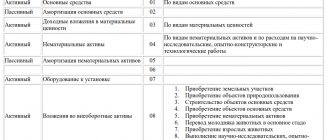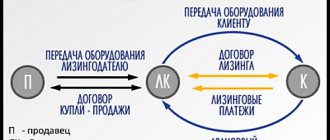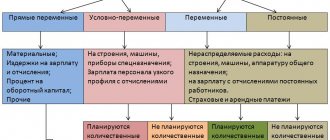General concept of inseparable improvements
Inseparable improvements can be considered those changes or transformations of an object that directly improve its capabilities, both functional and technical, but are at the same time inseparable from this object. For example, let’s take rented premises for a company office. Often the company has to invest additional funds in it. For reconstruction, modernization and other improvements. At the same time, when changing office premises, we can take these improvements with us without causing harm to the object.
However, the main question remains: what is the difference between these improvements and ordinary routine repairs? The legislation provides clarification on this matter. Current repairs, as a rule, are necessary to maintain the facility in working condition, and work on modernization, technical re-equipment, and completion of the facility are considered inseparable.
Separable and inseparable improvements: what is the difference
For proper taxation and accounting, all changes made to property must be correctly classified.
Improvement differs from regular repairs, which are carried out to remove damage and signs of normal wear and tear. Repair work is taken into account as current expenses in both accounting and tax reporting.
Improvements can be separable or inseparable, and the differences between them are not always clear. In some controversial cases, the court may order an examination to resolve this issue. So, to separable
This includes anything that the tenant can take without causing irreparable harm to the rental property.
Those that cannot be dismantled without damaging the premises or building are considered inseparable Damage in this case includes traces of fasteners and screws, defects in the finishing of ceilings and walls, etc. For example, inseparable changes include the installation of security and fire alarm systems, replacement of windows, doors and roller shutters, installation of air conditioners, etc. But in some cases, the court may recognize such improvements as separable if the damage during dismantling is small and easily repairable.
Separable improvements are recognized as fixed assets of the tenant and are subject to accounting and tax accounting as separate fixed assets. But the rules for accounting for inseparable improvements are often ambiguous.
Tax accounting of inseparable improvements
In cases where all improvements are carried out after agreement with the lessor, and all costs incurred for their creation are not reimbursed, the lessee can charge depreciation. To correctly determine depreciation rates, you can be guided by both the useful life of the leased property and the useful life of improvements. If even at the end of the lease period there remains an unamortized portion of the capital investment, it in any case cannot be taken into account in calculating income tax. This follows from the Tax Code of the Russian Federation, paragraph 16, article 270.
In the case where inseparable improvements are carried out with the consent of the lessor, but with reimbursement of costs, when the property is returned back, the tenant receives income. The tenant can reduce the amount of this income by the amount of expenses that were made for these improvements.
All costs of capital investments, namely inseparable improvements that are made by the tenant to the leased property, are included in the tax base when calculating income tax. Clause 1 of Article 374 of the Tax Code of the Russian Federation states that these costs are included on a general basis. On the date of return of the asset and inseparable improvements to the lessor, the lessee becomes obligated to charge VAT. This obligation arises on the basis that the gratuitous transfer of goods (works or services) is recognized as a sale.
OSNO and UTII
As a rule, it is always possible to determine to what type of activity the costs associated with compensation by the lessor for inseparable improvements to the leased property received on the balance sheet belong. Therefore, if an organization applies a general taxation system and pays UTII, such expenses within the framework of activities transferred to UTII and activities on the general taxation system must be taken into account separately in order to calculate income tax and VAT using the direct account method (clause 9 of Article 274 and Clause 4 of Article 170 of the Tax Code of the Russian Federation).
Costs associated with compensation for inseparable improvements to the tenant for activities transferred to UTII will not in any way affect the determination of the tax base for UTII (clauses 1 and 2 of Article 346.29 of the Tax Code of the Russian Federation).
In order to reflect these expenses in the general taxation system when calculating income tax, use the rules provided for this regime.
Depreciation of permanent improvements
All inseparable improvements that the tenant carries out in agreement with the landlord can be considered depreciable. And in cases where the costs of these improvements are not reimbursable by the lessor, the lessee can independently write off the costs by charging depreciation.
In this case, the tenant determines the useful life of the improvements themselves, and not the property. This period may differ from the one accepted by the lessor; at the same time, it must comply with the OS classifier. Depreciation of inseparable improvements occurs in the general manner, from the 1st day of the month following the month of acceptance of this object for accounting until the last day of the month of full repayment of the cost of this object.
Depreciation of permanent improvements, like any expense, must be documented.
These are standard documents that justify the economic feasibility and calculation of depreciation. The actual receipt of this property and its direct use must also be documented. That is, the following documents must be present:
- lease agreement (or sublease);
- act of transfer of leased assets;
- payment documents that can confirm the fact of payment for the rented property.
So that capital investments in fixed assets (improvements) can be recognized as depreciable property, and depreciation can be taken into account for tax purposes:
- these improvements must be made only with the consent of the landlord;
- the tenant is not compensated for the cost of improvements.
These two conditions must be stated in the lease agreement. The calculation of depreciation of investments in fixed assets (inseparable improvements) is used in the same way as companies use to calculate the depreciation of their own fixed assets. Straight-line depreciation is calculated using the following formula:
A=C*K/12, where
- A – depreciation charges per month;
- C – initial cost;
- K – annual depreciation rate.
Formula for calculating the annual depreciation rate:
Н=1/n*100%, where
- n – useful life of inseparable improvements.
Let us remind you once again that the tenant can set the useful life independently, but taking into account the classifier of fixed assets, which distinguishes several depreciation groups. Calculation of depreciation of improvements in a non-linear way can be done in the same way as if depreciation of fixed assets was calculated, taking into account depreciation groups.
Features of accounting for separable improvements that do not require the consent of the lessor
All improvements to leased property are divided into separable and inseparable
07/04/2017 Author: Expert of the Legal Consulting Service GARANT, auditor, member of the Russian Union of Auditors Mikhail Bulantsov
An organization subject to the general taxation regime installed a door and a partition in the rented premises, consisting of aluminum metal structures with double-glazed windows for a total cost including installation of 100,800 rubles, including VAT 18% - 15,376 rubles. 27 kopecks The invoice indicates 8.5 sq. m - aluminum structures filled with double-glazed windows, including installation.
A partition installed in an organization is a separable improvement that does not require the consent of the landlord. A separate door (item 5) was used for renovation (replacing an existing door). The useful life of the partition is not limited by the rental period of the premises.
The specification for the contract contains the following breakdown: product 1 - door (1.55 sq. m x 1 pc.), product 2 - window (1.55 sq. m x 2 pcs.), product 3 - window (1.55 x 1 pc.), product 4 - window (0.33 x 1 pc.), product 5 - door (1.83 sq. m x 1 pc.). The partition consists of products 1, 2, 3 and 4, and the free-standing door consists of product 5.
How should these metal structures be capitalized and the costs of them taken into account in accounting and tax accounting?
On this issue we take the following position:
In accounting, the Organization should divide the total cost of the contract with the supplier for the supply of components and installation between the capital costs of creating a fixed asset object (partition) and the costs of repairing the rented premises (replacing a door). See below for ways to divide costs.
For profit tax purposes, in the situation under consideration, there is no difference between the creation of an operating system with an initial cost of less than 100 thousand rubles and the costs of repairing the rented premises. All costs under the contract can be included in material costs during the period of completion of work under the contract and commissioning of the partition (coinciding with the period of door replacement).
Justification for the position:
During the lease term, the tenant may make improvements to the leased property.
All improvements to leased property are divided into separable and inseparable. In Art. 623 of the Civil Code of the Russian Federation, inseparable improvements are those improvements that cannot be separated without harm to property. Separable improvements are those that can be separated from the rental property without causing harm and used separately.
According to paragraph 1 of Art. 623 of the Civil Code of the Russian Federation, separable improvements made by the tenant to the leased property are his property, unless otherwise provided by the lease agreement. To carry out work on the production of separable improvements, as a general rule, the consent of the lessor is not required. Since separable improvements are the property of the tenant, he can separate them (remove, dismantle) during the validity of the lease agreement or upon expiration of the agreement.
The fact that partitions made of aluminum profiles can be classified as separable improvements to leased property is stated, for example, in the decisions of the Eighth Arbitration Court of Appeal dated 04/13/2011 N 08AP-829/11, the Nineteenth Arbitration Court of Appeal dated 06/28/2013 N 19AP-2204 /13, Fifteenth Arbitration Court of Appeal dated June 21, 2016 N 15AP-7453/16.
At the same time, a different situation is possible (resolution of the Seventeenth Arbitration Court of Appeal dated August 17, 2016 N 17AP-9508/16). The judges confirmed that, since the partitions are rigidly attached to the floor and ceiling of the non-residential premises, the dismantling of such improvements will cause damage to the rented property in the form of traces from fastenings, damage to the ceiling and floor covering in the places where the partitions adjoin, therefore, the disputed property refers to inseparable improvements to the property.
Accounting
According to the second paragraph of clause 5 of PBU 6/01 “Accounting for fixed assets” (hereinafter referred to as PBU 6/01), clause 46 of the Regulations on accounting and financial reporting in the Russian Federation, approved by order of the Ministry of Finance of the Russian Federation dated July 29, 1998 N 34n (hereinafter — Regulation No. 34n), capital investments in leased fixed assets (hereinafter referred to as fixed assets) are taken into account as part of fixed assets. In accordance with clause 47 of Regulation No. 34n, completed capital investments in leased fixed assets are credited by the lessee organization to its own fixed assets in the amount of actual costs incurred, unless otherwise provided by the lease agreement. Moreover, taking into account the fourth paragraph of clause 5 of PBU 6/01, such assets worth more than 40,000 rubles per unit should be reflected in accounting and financial statements only as part of fixed assets.
PBU 6/01 does not specify what specific capital investments in leased objects are taken into account as part of the tenant’s fixed assets (separable or inseparable, made with or without the consent of the lessor, reimbursed or non-reimbursable). Based on this, we can conclude that separable improvements made by the tenant must be included by him in his own OS. For example, in the letter of the Federal Tax Service of Russia for Moscow dated November 15, 2010 N 16-15/ [email protected] it is said that the property of the tenant, according to the general rules of civil law, can be separable improvements, which, according to the accounting instructions, are taken into account as part of fixed assets ( and, therefore, are included by the tenant in the tax base for corporate property tax). See also paragraph 1 of the letter of the Federal Tax Service of Russia for the Krasnodar Territory dated June 21, 2010 N 15-10/ [email protected]
Clause 3 of the Methodological Guidelines for the accounting of fixed assets, approved by Order of the Ministry of Finance of Russia dated October 13, 2003 N 91n (hereinafter referred to as the Guidelines), states that fixed assets take into account capital investments in leased fixed assets that are the property of the tenant (see also pp. 10, 35 of the Guidelines).
We come to the conclusion that accounting for capital investments in separable improvements must be carried out by the tenant in the general manner established for the operating system.
In accordance with clause 6 of PBU 6/01, the accounting unit of fixed assets is an inventory item. An inventory item of fixed assets is an object with all its fixtures and accessories, or a separate structurally isolated item intended to perform certain independent functions, or a separate complex of structurally articulated items that constitute a single whole and are intended to perform a specific job. A complex of structurally articulated objects is one or more objects of the same or different purposes, having common devices and accessories, common control, mounted on the same foundation, as a result of which each object included in the complex can perform its functions only as part of the complex, and not independently.
In the case under consideration, the function of dividing the rented premises can be performed not by a separate structure, but by a complex of structurally articulated objects, which represents a partition. Consequently, only the partition as a whole can be an inventory object.
Based on clauses 7 and 8 PBU 6/01 OS are accepted for accounting at historical cost. The initial cost of fixed assets acquired for a fee is recognized as the amount of the organization's actual costs for acquisition, construction and production, excluding VAT and other refundable taxes (except for cases provided for by the legislation of the Russian Federation). The actual costs of purchasing, constructing and manufacturing OS are, in particular:
- amounts paid in accordance with the contract to the supplier (seller), as well as amounts paid for delivering the object and bringing it into a condition suitable for use;
— amounts paid to organizations for carrying out work under a construction contract and other contracts;
— other costs directly related to the acquisition, construction and production of fixed assets.
In the situation under consideration, the Company entered into an agreement for the supply and installation of structures. The contract price excluding VAT exceeds the established limit (40,000 rubles, see also letter of the Ministry of Finance of Russia dated February 17, 2016 N 03-03-07/8700).
According to clause 17 of PBU 6/01, the cost of fixed assets (including capital investments in leased fixed assets) is repaid through depreciation. Depreciation is accrued over their useful life, which is understood as the period during which the use of an object brings economic benefits (income) to the organization (clause 4 of PBU 6/01). The useful life is determined by the organization in the manner established by clause 20 of PBU 6/01. Note that in the case under consideration, the useful life should not exceed the planned lease period (letter of the Ministry of Finance of Russia dated 05/07/2013 N 07-01-06/15879). Depreciation is calculated using one of the methods established by clause 18 of PBU 6/01.
At the same time, the Organization has the right, for accounting purposes, to independently determine the useful life, without relying on any standards, but only guided by the principles established in paragraph 20 of PBU 6/01 (letter of the Ministry of Finance of Russia dated March 27, 2006 N 03-06-01- 04/77).
At the same time, the door (item 5) was used to replace an existing door without changing its functional purpose. In our opinion, this corresponds to the concept of repair (see also the materials: Question: What type of repair (current or major) should include partial replacement of windows and doors in a state (municipal) institution (replacement is carried out in one group of a kindergarten)? (answer from the Legal Service consulting GARANT, June 2016); Question: The organization rented a premises in which there used to be a workshop. The term of the lease agreement is 4 years. At the moment, the lease agreement has been submitted for registration as a long-term one. The premises have been renovated. The work was carried out by different contractors and were carried out with the consent of the lessor. What is the procedure for accounting for expenses for carrying out work in accounting and for profit tax purposes? Is it possible to deduct VAT on work and acquired material assets for carrying out this work? (response from the Legal Consulting Service GARANT, January 2017) ).
Recognition of the results of renovation work as integral improvements depends on the technical characteristics of the renovation work and the wording of the lease agreement, so we cannot definitively decide whether the renovation of the premises in the situation under consideration will lead to the creation of integral improvements. However, the nature of the work being carried out (replacing a door) does not imply that dismantling the results of the repair could cause significant damage to the premises. The Ministry of Finance of Russia proposes to consider repair work that does not entail changes in the functions of the object and its operational characteristics (letters of the Ministry of Finance of Russia dated March 24, 2010 N 03-03-06/4/29, dated April 18, 2006 N 03-03-04/1/358) . Therefore, in further discussions we proceed from the assumption that repairs in this case do not lead to the creation of inseparable improvements.
Costs for the repair of rented premises used in the business activities of the organization are reflected as part of expenses for ordinary activities (costs of maintenance and operation of the operating system) on the basis of clause 7 of PBU 10/99 “Expenses of the organization” (hereinafter referred to as PBU 10/99). Such expenses are reflected in the accounting records of the reporting period to which they relate (clause 18 of PBU 10/99).
In this regard, the question arises: how to divide the total amount of costs under the contract with the supplier between the capital costs of creating an OS facility (partition) and the costs of repairing the rented premises in the form of replacing a door?
Unfortunately, the accounting regulations do not provide an answer to this question. Therefore, based on our expert opinion, we can only recommend the following solutions to the problem:
a) request from the supplier a separate cost of product 5 (doors), then calculate the cost of creating the partition by subtracting the resulting figure from the total cost of the contract (excluding VAT);
b) by means of technical specialists (not an accountant), determine (allocate) the amount of costs for the creation of an OS object (partition) by expert means and secure it with the decision of a permanent commission for the receipt and disposal of intangible assets, inventories and fixed assets (or a similar body operating in the Organization ).
Income tax
In accordance with paragraph 1, clause 1, art. 256 of the Tax Code of the Russian Federation, depreciable property for profit tax purposes is property that is owned by the taxpayer (unless otherwise provided by Chapter 25 of the Tax Code of the Russian Federation), is used by him to generate income and the cost of which is repaid by calculating depreciation. Depreciable property is property with a useful life of more than 12 months and an original cost of more than 100,000 rubles. At the same time, part of the property used as means of labor for the production and sale of goods (performing work, providing services) or for managing an organization with an initial cost of more than 100,000 rubles for tax accounting purposes is classified as fixed assets (clause 1 of Article 257 of the Tax Code of the Russian Federation) .
Thus, in order to include an office partition in the depreciable property (OS) in the situation under consideration for tax accounting purposes, it is necessary to take into account the conditions for classifying property as depreciable, established by paragraph 1 of Art. 256 of the Tax Code of the Russian Federation, including the cost criterion.
Since the total amount of costs under the contract (excluding VAT), even together with a separate door used for repairs, is 85,423.73 rubles, the costs of the partition are subject to accounting as part of inventories and their cost can be included in material costs in full as they are put into operation (clause 3, clause 1, article 254 of the Tax Code of the Russian Federation, letter of the Federal Tax Service of Russia for Moscow dated April 28, 2006 N 20-12 / [email protected] ).
At the same time, since from January 1, 2021, in tax accounting the limit on the value of fixed assets is 100,000 rubles. (Clause 1 of Article 256 of the Tax Code of the Russian Federation), and in accounting remained unchanged (40,000 rubles (Clause 5 of PBU 6/01)), with this method of reflecting transactions, differences are formed between accounting and tax accounting.
The letter of the Ministry of Finance of Russia dated May 20, 2016 N 03-03-06/1/29124 discussed this situation. The organization intended to establish in its accounting policy that for the purposes of calculating income tax, assets worth up to 40,000 rubles. inclusive are written off at a time, and assets worth from 40,000 to 100,000 rubles. — evenly throughout the useful life. It was clarified that for the purpose of taxing the profits of organizations, the taxpayer has the right to write off the cost (acquisition costs) of property that is not depreciable for more than one reporting period in the manner determined by him independently, taking into account the period of use of such property or other economically justified indicators. In this case, this procedure must be enshrined in the accounting policy for tax purposes. At the same time, it was said that Chapter 25 of the Tax Code of the Russian Federation does not provide for provisions on the possibility of writing off material expenses in different ways depending on the cost of the relevant property (see also material: Question: The organization acquired and put into operation in the fourth quarter of 2021 a large number of fixed assets costing from 40 up to 100 thousand rubles - machinery and equipment, tools, etc. Does an organization have the right to use different methods of recognizing expenses for the acquisition of property that is not depreciable property (for example, a welding machine worth up to 40,000 rubles should be recognized as expenses in the full amount as putting it into operation, and a welding machine worth more than 40,000 rubles, but less than 100,000 rubles - for more than one reporting period, taking into account the period of its use)? (response from the GARANT Legal Consulting Service, February 2021)).
Regarding door repairs. Accounting for expenses for the repair of fixed assets for profit tax purposes is regulated by Art. 260 Tax Code of the Russian Federation. In accordance with paragraph 2 of Art. 260 of the Tax Code of the Russian Federation, the tenant’s expenses for the repair of leased depreciable fixed assets, if the contract (agreement) between the tenant and the lessor does not provide for reimbursement of these expenses by the lessor, are classified as other expenses and are recognized for tax purposes in the reporting (tax) period in which such expenses are incurred, in the amount of actual costs (letter of the Ministry of Finance of Russia dated January 30, 2012 N 03-03-06/2/5).
At the same time, tax legislation does not make the costs associated with repairs dependent on the type of repair performed (current, medium or capital) or the method of its implementation (economic or contract) (letter of the Ministry of Finance of Russia dated December 29, 2007 N 03-03-06/1 /901, dated 03.11.2006 N 03-03-04/1/718). The cost of carrying out work in accordance with Chapter 25 of the Tax Code of the Russian Federation is not a criterion for classifying it as a repair (letter of the Ministry of Finance of Russia dated March 24, 2010 N 03-03-06/4/29).
Thus, since the repair of rented premises (replacing a door) will not be recognized by the Organization as the creation of inseparable improvements, the costs of repairs can be immediately recognized for tax purposes.
We come to the conclusion that in the situation under consideration, for profit tax purposes, there is no difference between the creation of an operating system with an initial cost of less than 100 thousand rubles and the costs of repairing the rented premises. All costs under the contract can be included in material costs during the period of completion of work under the contract and commissioning of the partition (coinciding with the period of door replacement).
GARANT.RU
Post:
Comments
Answers to common questions
Question No. 1. “Our company and the company from which we rent the OS sign certificates for the provision of these services every month. Are they needed to confirm expenses for improvements to the OS object?”
For your organization, of course, it is better for you to draw up and sign such a document. But to confirm expenses, the tax office does not require this (clause 2, letter of the Federal Tax Service of Russia N02-1-07/81).
Question No. 2. “How to calculate inseparable improvements at original cost?”
Just like you would calculate the primary cost of an OS, that is, you must include the costs of purchase, transportation and installation.







